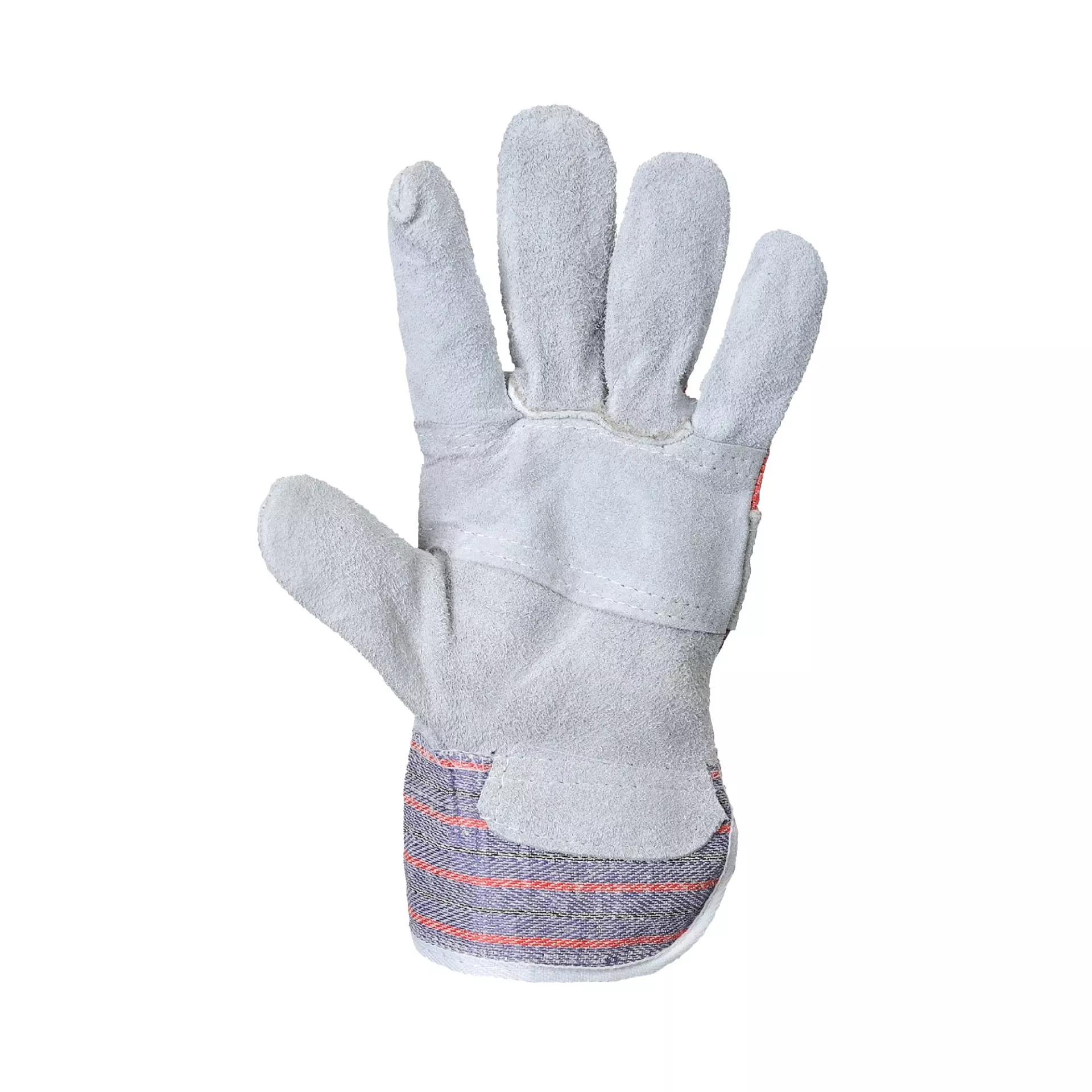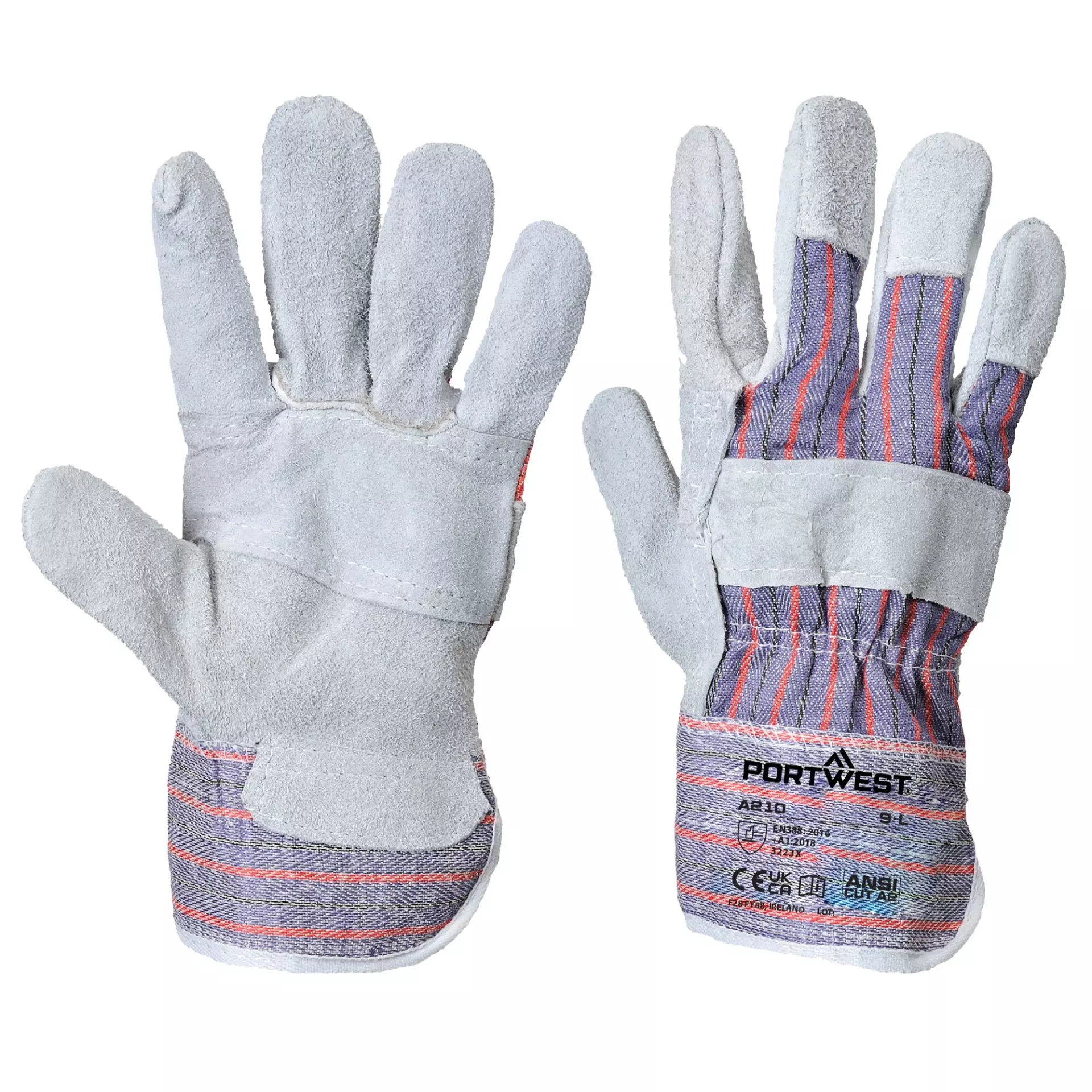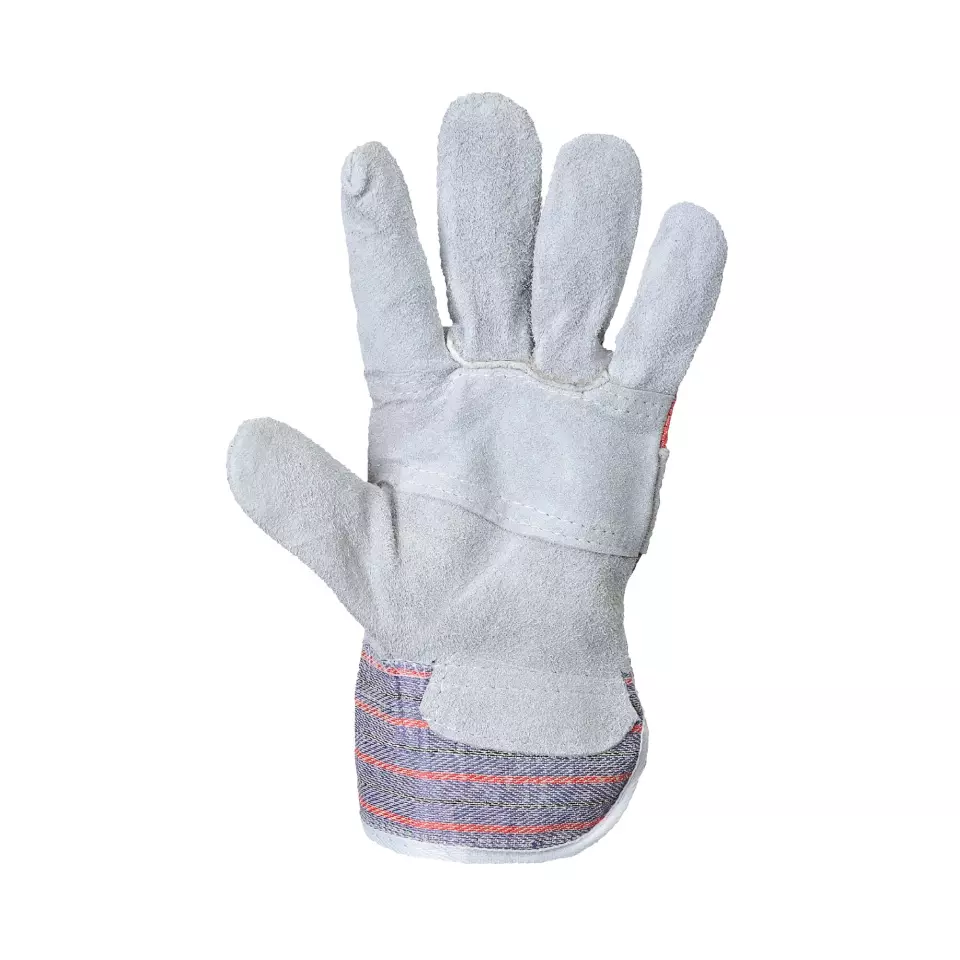


Features You'll Love

Palm Material · Cowhide Leather
The material used on the palm side of the glove, affecting grip, durability, protection level, and comfort during use.
Portwest
Canadian Rigger Glove, Grey, 12 pairs
Canadian Rigger Glove, Grey, 12 pairs
4.8 / 5
43,23 €
Price per 12 pairs
3,60 € / pair
Choose size
Shipping fee is 7,95 € for orders under 80,00 €
Features You'll Love

Palm Material · Cowhide Leather
The material used on the palm side of the glove, affecting grip, durability, protection level, and comfort during use.
Product description
The original Canadian rigger style leather work glove featuring cow split leather construction with enhanced protection zones. This glove combines knuckle back protection with patch palm and vein protection for comprehensive hand safety. Cotton backing provides improved comfort and ventilation while maintaining superb abrasion and tear resistance for demanding work environments.
Product Features:
- Cow split leather rigger construction
- Knuckle back protection
- Patch palm and vein protection
- Cotton backing for breathability
- Superb abrasion and tear resistance
Recommended Applications:
- Construction
- Mining
- Landscaping
Standards:
- CE certified
- EN ISO 21420: 2020 Dexterity 1
- EN 388: 2016 + A1: 2018 (4111X)
- ANSI/ISEA 105: 2016 CUT Level (A2)
- ANSI abrasion level 3